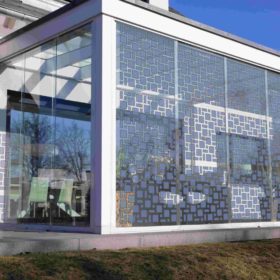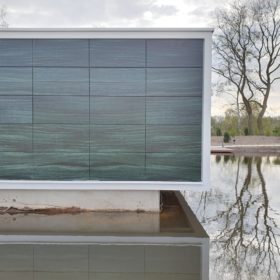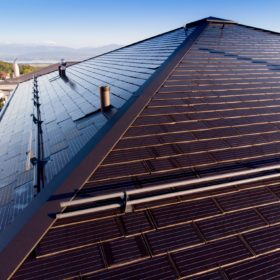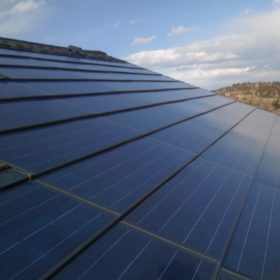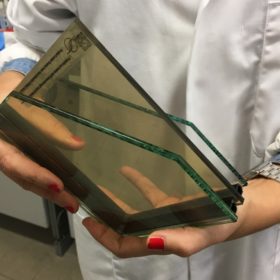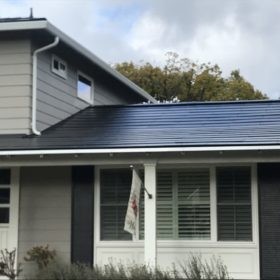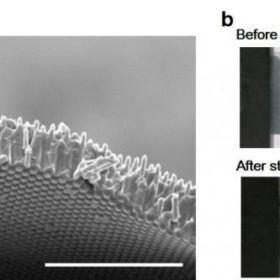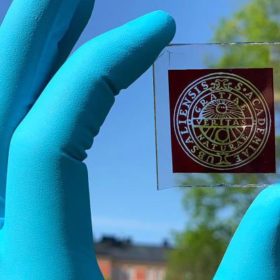‘Free-form’ organic PV
French organic PV module manufacturer Armor said it began manufacturing free-form PV modules in early April. The new technology will allow the company’s ASCA PV film to be produced in a range of different shapes.
Australian researchers take solar windows to the next level
The building-integrated PV devices have taken a big leap forward on the back of a partnership between Australian scientists and a major glass manufacturer which will investigate the use of semi-transparent solar cells in commercial applications, potentially revolutionizing building design.
Wood-like solar facades
Taiwanese manufacturer Heliartec Solutions is offering BIPV panels for building facades that can be designed to mimic different kinds of textures in conventional building materials. The panels can also work as colored laminated safety glass and replace traditional cladding in the ventilated facades of buildings. They vary in length from 60 cm to 240 cm, with widths ranging from 30 cm to 120 cm. Depending on their size, the panels can offer power outputs of 90 W to 150 W per square meter.
ClearVue’s luminescent solar concentrators create clear PV windows
The lure of building integrated photovoltaics continues to attract entrepreneurs and startups.
Solar tiles for new and historic buildings
Available in three versions, the product costs around $307-324 per square meter although prices will vary depending on project complexity. Swiss manufacturer Freesuns says its tiles can be used on historic buildings and can cover 100% of rooftops.
BIPV relying on voltage source inverters for grid stabilization
According to a Norwegian group of researchers, the reactive power capability of three-phase voltage source inverters can help to reduce problems caused by the intermittent nature of solar power on distribution networks. The scientists claim they are preferable to expensive grid infrastructure such as under-load tap changing transformers, step voltage regulators, and fixed and switchable capacitors. The group has developed a system model featuring a 7.63 kW PV array module, a three-phase voltage source inverter with 9.5 kVA of capacity, a boost converter, a three-phase dynamic load, and a utility grid.
Solar windows made of chromophores
An Italian startup has developed a luminescent solar concentrator technology that can be integrated with active architectural elements and windows. The technology is based on nanoparticles known as chromophores, which decouple the absorption and light-emission processes, thanks to appropriate engineering. The company claims it has achieved a conversion efficiency of up to 3.2%, with a degree of transparency in the visible spectrum of around 80%.
Tesla solar glass roof tile photo gallery update
Videos from very involved solar roof owners. Some before and after photos. More tile boxes from China.
A stretchable, transparent solar cell with 8% efficiency
Korean scientists have unveiled a colorless device made of silicon microwire composites. The enhanced light absorption of the cell, the researchers claim, is due to the re-absorption of light by the microwires, which also benefit from an enhanced electric field.
A 34% efficient dye-sensitized device for indoor PV
A European research team has developed a dye-sensitized PV cell based on a copper iodide complex. The device was conceived for use in self-powered and internet of things devices.
